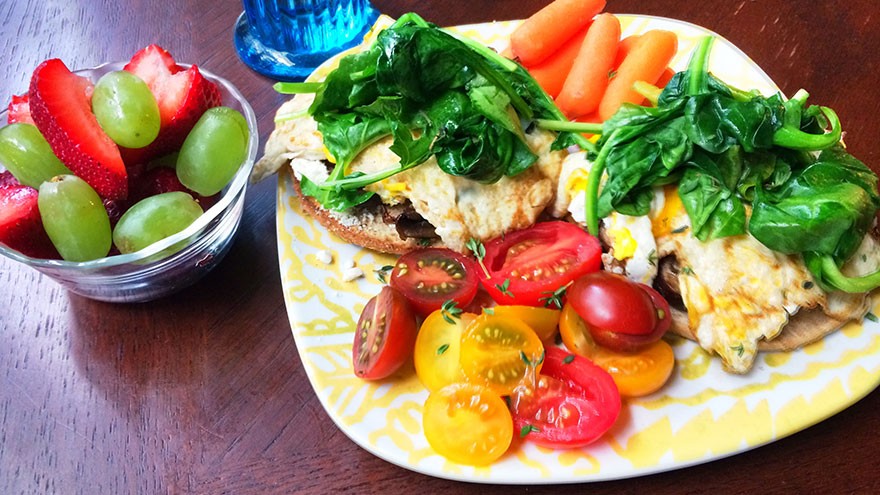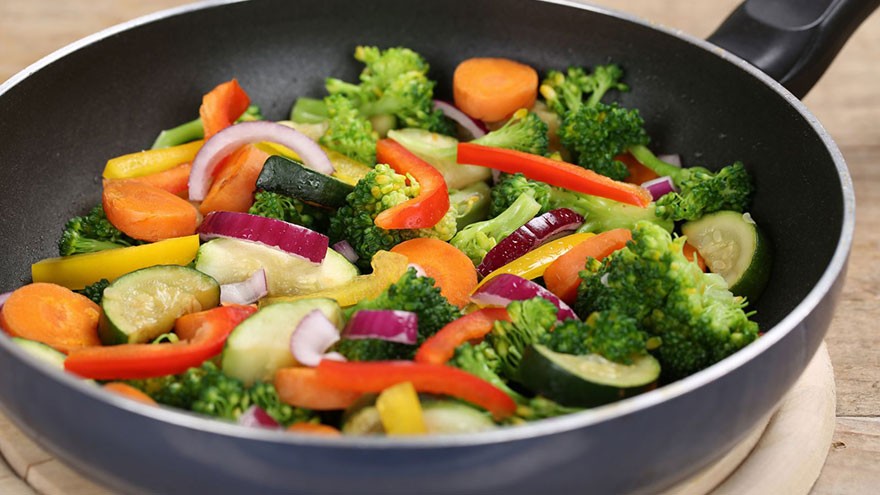How to Eat More Vegetables
The Centers for Disease Control (CDC) say ½ of every plate of food we eat should be covered with vegetables. There’s little doubt Americans aren’t eating enough vegetables.
The question is; “How can we easily incorporate more into our diet?”
How to Eat More Vegetables at Breakfast
Pancakes, waffles, eggs and toast, cereal. The most common breakfast foods don’t contain any vegetables at all. Fortunately, it’s not difficult to add some. Try making an omelet with vegetables in it. A Collard Greens Omelet is terrific, or try a basic omelet with a mixture of vegetables like diced bell pepper, sliced or diced mushrooms, sliced green onions (scallions), chopped spinach or other dark leafy greens, sliced leeks, chives, diced tomato, diced onion.
If you don’t like making omelets, make a scramble instead: Scramble eggs, but add vegetables to the skillet. All the same vegetables that work for omelets work for scrambles. Just be sure to add tougher vegetables (like onions and bell peppers) at the beginning of the cooking and more delicate ones, like greens or tomatoes, near the very end.

Zucchini can be shredded and added to the batter of pancakes, waffles, or muffins. It takes on the flavor of what it’s cooked with and is an excellent way to sneak veggies into your children’s breakfast.
Smoothies are also a good way to get your veggies at the start of the day. Try pureeing spinach or other greens, fruit (like apples, oranges, pears, or melon), and some plain or vanilla yogurt.
How to Eat More Vegetables at Lunch
Sandwiches are a common lunchtime meal. Make them healthier by avoiding low nutrient pale-colored lettuce and adding plenty of dark-colored lettuces or greens. Other healthy additions include sprouts, cucumber slices or pickles, sliced olives, sliced onion, sliced peppers, shredded kohlrabi, shredded carrots, shredded cabbage, or sauerkraut.
A large salad can also be very filling if you use plenty of dark, leafy greens. Add ons could include broccoli and cauliflower heads, sliced or shredded carrots, sliced or cubed cucumber, chives or diced or sliced onion, sprouts, sliced radish, sliced celery, chopped peppers, sliced mushrooms, shredded cabbage, sliced green onions (scallions), snow peas, olives, sundried or fresh chopped tomatoes, asparagus, kohlrabi, and artichoke hearts.

For a non-sandwich or salad lunch, you could also eat vegetables on the side. Raw carrots, broccoli, cauliflower, celery, and tomatoes are the most commonly eaten, but you could also try raw cucumber, radishes, peppers, snow peas, olives, and avocado. Just try to avoid fatty, preservative-laden dips. If you want something to dip them in, try hummus or plain or vanilla-flavored yogurt.

Check out the video version of this article on YouTube

